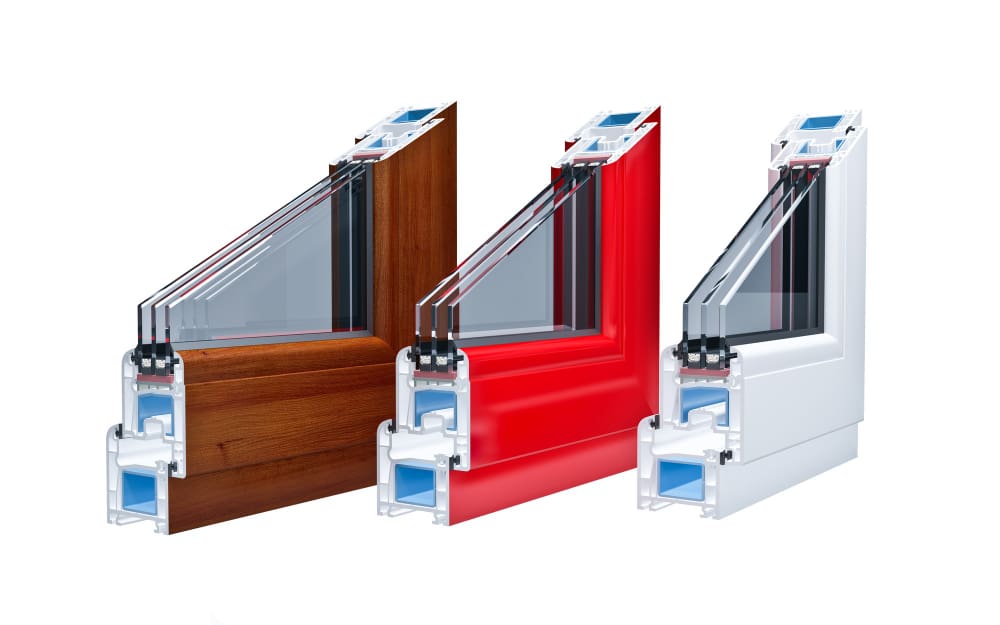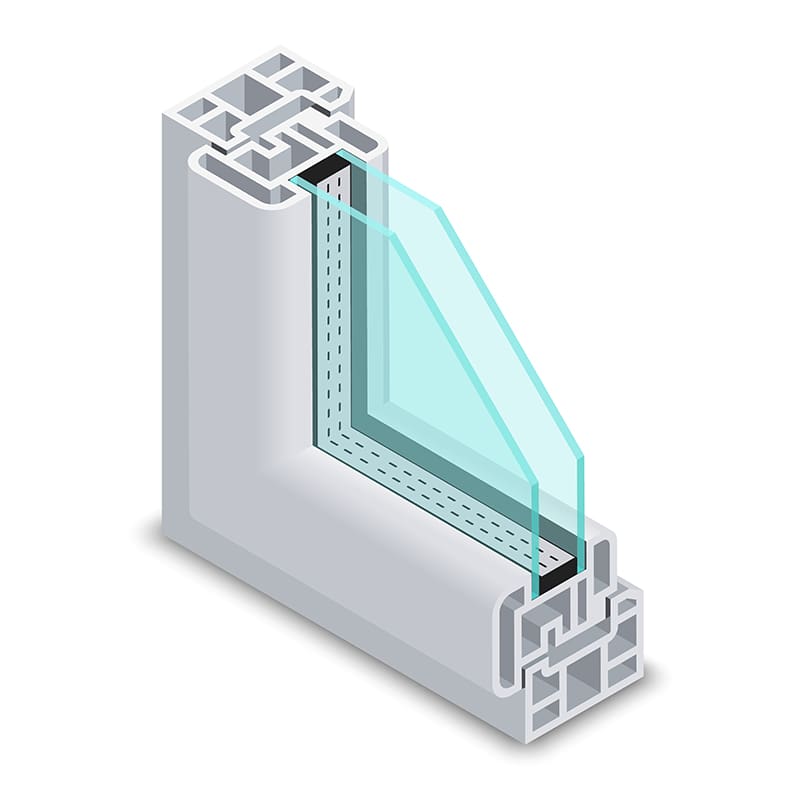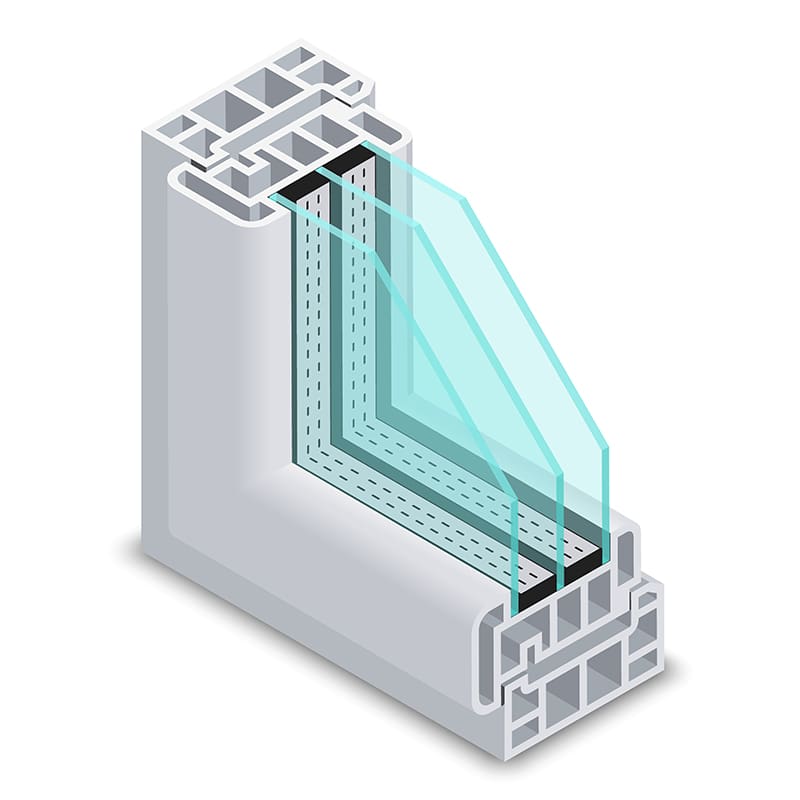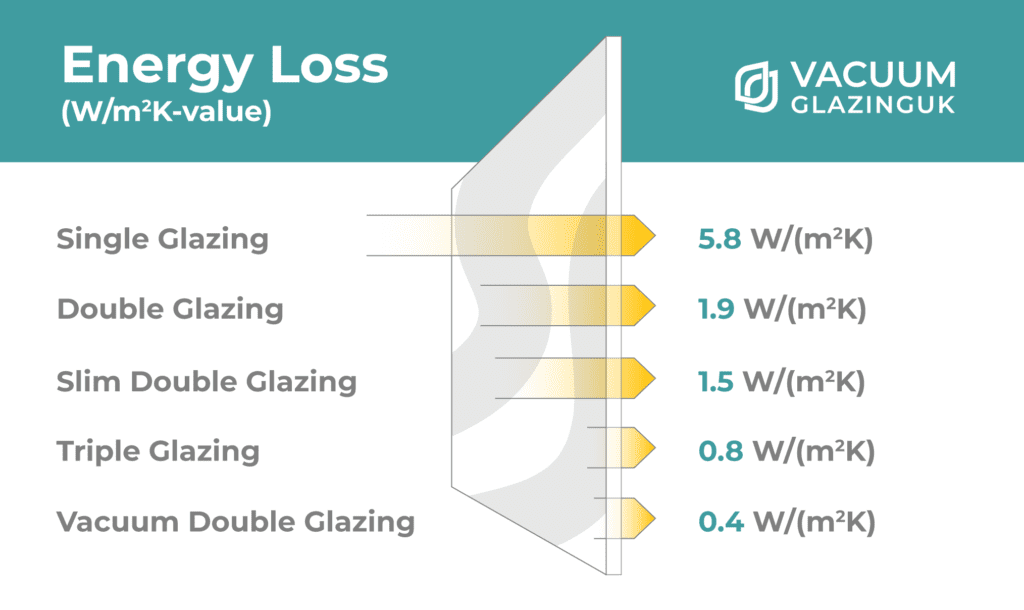
Double Glazing or Triple Glazing
In this post, we will unravel the advantages of triple glazing over double glazing, examining its superior thermal performance, enhanced soundproofing capabilities, and the scenarios in which it is preferred
In the first of our Home Insulation series we look at Triple Glazing and how it improves on the benefits of standard double glazing.
Definition and Advantages of Triple Glazing
Triple glazing takes the concept of double glazing to the next level by incorporating an additional glass pane, resulting in three layers of glass separated by two insulating gaps. Like double glazing, the gaps are typically filled with insulating gas for improved thermal performance. The additional glass layer and air/gas barriers provide enhanced insulation and energy-saving benefits. Some of the advantages of triple glazing include:
Superior Insulation
With an extra layer of glass and an additional insulating gap, triple glazing offers even better thermal insulation than double glazing. It minimizes heat loss during winter and reduces heat gain in the summer, leading to improved energy efficiency.
Enhanced Soundproofing
The additional glass pane in triple glazing further contributes to sound reduction, making it an excellent choice for homes located in noisy areas or near busy streets.
Increased Comfort
Triple glazing creates a more consistent indoor temperature, eliminating cold spots near windows and ensuring a comfortable living environment throughout the year.
Reduced Condensation
The additional thermal barrier in triple glazing helps reduce the occurrence of condensation on the interior surfaces of windows, preventing potential mould and damp issues.
Lower Carbon Footprint
With its excellent thermal performance, triple glazing allows for reduced reliance on heating and cooling systems, leading to lower carbon emissions and a greener home.
Key Differences between Double and Triple Glazing:
The primary difference between double and triple glazing lies in the number of glass panes and insulating gaps. While double glazing features two glass panes and one insulating gap, triple glazing incorporates three glass panes and two insulating gaps. This results in a more substantial barrier against heat transfer and sound infiltration in triple glazing.
The extra layer of glass in triple glazing increases the window’s thickness, making it slightly heavier than double glazing units. As a consequence, triple glazing may require sturdier window frames to support the added weight.
Triple Glazing vs Double Glazing
When Is Triple Glazing Preferred over Double Glazing?
The choice between triple glazing and double glazing depends on various factors, including climate, budget, and specific insulation needs. Triple glazing is typically preferred under the following circumstances:
Colder Climates
In regions with harsh winters and extreme temperatures, such as northern regions or high-altitude areas, triple glazing can provide superior insulation and help maintain a consistently warm indoor environment.

Noise Reduction
For homes situated in noisy neighbourhoods or near busy roads, triple glazing’s enhanced soundproofing capabilities makes it a favourable option for creating a peaceful living environment.
Passive House Construction
In energy-efficient, passive house designs, triple glazing is often used to achieve the stringent energy performance standards required for such buildings.
High Energy Costs
In areas where energy prices are high, the long-term energy savings offered by triple glazing may outweigh the initial investment.
However, it’s essential to consider the cost-benefit analysis for your specific situation. Triple glazing is generally more expensive than double glazing, and the additional cost may take longer to recoup through energy savings alone. For moderate climates or areas with mild winters, double glazing might provide sufficient insulation while being more budget-friendly.
In the next sections, we will explore double glazing in comparison with other insulation methods, allowing you to make an informed decision based on your unique requirements and preferences.


Vacuum Glazing – Taking Triple Glazing to the Next Level
While triple glazing is a significant advancement over traditional double glazing, there is an even more remarkable innovation known as vacuum glazing. Vacuum glazing takes insulation to new heights by eliminating the air or gas-filled gaps present in standard triple glazing. Instead, it incorporates a vacuum into one of the sections, creating an extremely effective thermal barrier.

The benefits of vacuum glazing surpass those of conventional triple glazing
1. Unrivaled Insulation
The absence of air or gas eliminates heat conduction, resulting in unparalleled insulation performance. Vacuum glazing sets the standard for reducing heat loss and gain, making it a top choice for achieving optimal energy efficiency.
2. Maximum Soundproofing
With no gas to transmit sound, vacuum glazing provides exceptional soundproofing properties, offering a tranquil living environment even in the noisiest areas.
3. Ultra-Thin Profile
Vacuum glazing’s innovative design allows for an ultra-thin profile, providing a sleek and modern appearance that complements any architectural style.
LandVac Optimum Glazing: Triple Glazing with Vacuum Layer
At Vacuum Glazing UK, we believe in delivering the best possible solutions for our customers. That’s why our optimum glazing recommendation is a fusion of the proven benefits of triple glazing and the cutting-edge technology of vacuum glazing. By combining these two approaches, we create triple glazing with a vacuum layer that enhances all the advantages of traditional triple glazing, taking your home insulation to unprecedented levels of efficiency and comfort.
If you seek superior energy savings, unrivalled insulation, and a noise-free oasis within your home, consider upgrading to our triple glazing with vacuum layer solution. Contact us today to learn more about how this innovation can transform your living space into an oasis of comfort and sustainability.
Find out more about LandVac Optimum Vacuum Glazing.